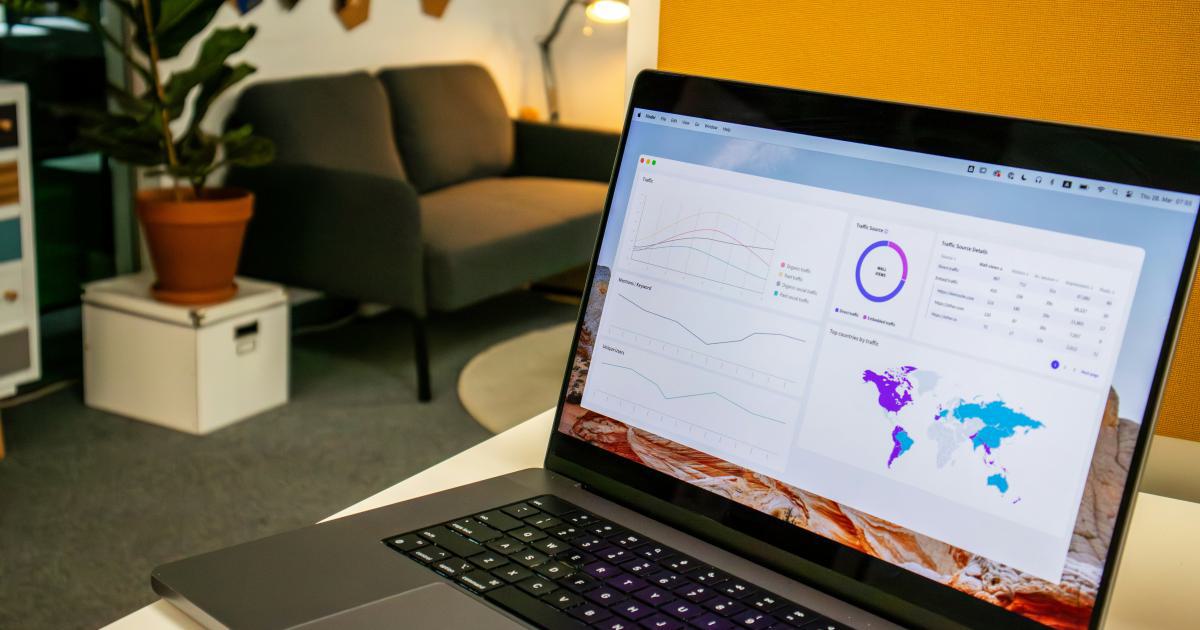12 Powerful Tricks to Improve Backtesting Accuracy

Ensuring backtesting accuracy is paramount when building robust trading systems. In today’s data-driven world, traders and analysts are continuously refining techniques to enhance prediction models using historical data. Over the years, valuable methods have emerged that help mitigate biases, account for market variability, and provide a realistic view of a strategy's performance. This comprehensive guide delves into 12 powerful tricks to improve backtesting accuracy, presenting theoretical insights, practical approaches, and relevant case studies that reflect real-world challenges.
In this article, we will explore a blend of foundational principles and cutting-edge techniques, all centered around enhancing the reliability of your backtesting results. Whether you are just starting to develop algorithmic trading strategies or have an established portfolio, these methods aim to bring a new level of precision and confidence to your decision-making process.
Introduction
Backtesting is a critical phase in developing and optimizing trading strategies. The practice involves simulating a trading strategy using historical data to determine its potential effectiveness. However, the accuracy of backtesting can be compromised by biases such as overfitting, survivorship bias, and look-ahead bias, among others. Hence, traders must adopt rigorous practices to ensure that their test results reflect what might occur in live markets.
This article covers the following:
- Key Backtesting Challenges: Understanding the common pitfalls.
- 12 Practical Tricks: How to refine your approach.
- Real-world Applications: Relating techniques to practical scenarios.
- Future Trends: Emerging tools and software improvements.
"Accurate backtesting empowers traders to differentiate between a working strategy and a lucky trade."
Drawing upon both academic research and industry best practices, we dive deep into strategies designed to enhance backtesting accuracy. For many, the primary question remains: How can we minimize errors and improve the realism of historical simulations?
Background: The Foundation of Backtesting
Before we explore tricks to improve accuracy, it's important to understand the foundational context of backtesting. Backtesting analysis is rooted in historical data, but it is not without its challenges. A solid comprehension of the underlying assumptions and limitations is the very first step towards building a robust framework.
The Importance of Historical Data
Historical data provides the context for testing theories about market behavior. However, merely having data is not enough. High-quality data, free of errors and sufficiently granular, is essential to avoid skewed results.
Some critical data-related aspects include:
- Data Quality: Data inconsistencies or errors can lead to significant deviations in backtesting results.
- Data Granularity: More granular data can offer better insights into intra-day price movements and reduce noise that might mislead broader trends.
- Extended Timeframes: Testing strategies over long periods can help evaluate performance across different market cycles.
| Factor | Importance Level | Impact on Backtesting |
|---|---|---|
| Data Quality | High | Crucial |
| Data Granularity | Medium | Significant |
| Market Conditions | High | Variable |
Common Pitfalls in Backtesting
Even the most meticulously designed backtesting framework can fall prey to several common mistakes:
Overfitting: Optimizing a strategy to work exceedingly well on historical data but failing in live conditions.
Look-Ahead Bias: Inadvertently using future data points during the backtesting process.
Survivorship Bias: Ignoring stocks or securities that have disappeared over time, leading to overly optimistic results.
Data Snooping: Continuously tweaking strategies based on past data until minor patterns are exploited, which may not hold in the future.
Understanding these pitfalls lays the groundwork for employing the 12 strategies that will follow. Each trick addresses a specific aspect of these challenges, ensuring that your backtesting process is both robust and reliable.

1. Use High-Quality Data
The first and foremost trick to achieving backtesting accuracy is ensuring that you use the best possible data available. Poor data quality is one of the leading causes of errors in backtesting, and even the most well-crafted strategies can suffer if the underlying data is flawed.
Importance of Data Integrity
Data integrity implies accuracy, consistency, and completeness. Datasets that are rife with gaps, errors, or outdated information can result in misleading backtesting outcomes.
Strategies to Improve Data Quality:
- Data Cleaning: Regularly clean your dataset by removing duplicates, adjusting for splits, and rectifying anomalies.
- Cross-Verification: Utilize multiple sources to cross-verify data points.
- Granularity Levels: Choose data that reflects relevant time intervals based on your strategy's timeframe.
"Using high-frequency, reliable data is the bedrock of every successful backtesting effort."
Employing these methods significantly reduces the risk of obtaining results that are skewed by poor-quality data. In addition, maintaining a historical archive of the data used for testing can be invaluable for future reviews and audits.
2. Account for Market Conditions
Market conditions are rarely static; they evolve based on economic, political, and social factors. To ensure backtesting accuracy, incorporating different market regimes into your evaluation is essential.
Market Regimes and Their Impacts
Different market conditions—including bull, bear, and sideways markets—impact the performance of trading strategies differently. Recognizing these distinct phases improves the realism of your backtesting.
Implementation Steps:
- Segmentation: Divide historical data into distinct market regimes based on volatility, trends, and economic indicators.
- Stress Testing: Simulate extreme market events to understand how your strategy performs during crises.
- Adaptive Methods: Develop dynamic models that adjust strategy parameters based on market phase.
This approach helps reveal whether a strategy is robust enough to withstand varying market conditions or if it needs further adaptations for resilience in the face of market shocks.
3. Incorporate Transaction Costs
One critical yet often overlooked factor is transaction costs. Ignoring these can lead to overly optimistic backtest results that don't accurately reflect real trading environments.
Why Transaction Costs Matter
Transaction costs include brokerage fees, slippage, taxes, and bid-ask spreads. These factors can significantly erode profits, especially in high-frequency trading scenarios.
How to Incorporate Costs:
- Fixed vs. Variable Costs: Differentiate between fixed commission fees and variable costs that depend on trade volume.
- Simulate Realistic Execution: Integrate realistic execution models that capture slippage and spread issues.
- Regular Updates: Ensure that the input cost parameters are updated regularly to reflect current market conditions.
| Cost Component | Description | Impact on Returns |
|---|---|---|
| Brokerage Fees | Fixed per-trade charges | Moderate |
| Slippage | Price changes during exec | High |
| Bid-Ask Spread | Difference in quotes | Significant |
By meticulously including all associated transaction costs, you develop a more defensible and realistic strategy, thereby enhancing backtesting accuracy.
4. Validate with Walk-Forward Testing
Walk-forward testing is an extension of traditional backtesting. Instead of testing on a fixed dataset, the strategy is continuously optimized to adapt to new data.
Benefits and Implementation
This method addresses the issue of overfitting by validating the strategy on fresh, unseen data. Here's how you can implement this:
Divide Data: Split your data into multiple segments.
Optimize on In-Sample Data: Adjust your strategy parameters using the first segment.
Test on Out-of-Sample Data: Validate the performance on the succeeding segment.
Iterate and Re-evaluate: Continue this process throughout the dataset to simulate live trading conditions.
"Walk-forward testing provides a dynamic way to gauge the efficacy of a strategy, keeping it relevant over time."
Using this technique, traders can ensure that their strategies do not simply perform well on historical data but are robust enough to handle future market variations.
5. Leverage Monte Carlo Simulations
Monte Carlo simulations are a statistical tool used to gauge the effect of randomness on the strategy's returns. By running thousands of simulated trials, you can determine the probability distribution of outcomes.
How It Enhances Accuracy
Monte Carlo simulations help in understanding the range of potential outcomes by factoring in the randomness inherent in trading. This can highlight the risk and variability in a strategy's performance.
Steps to Implement Monte Carlo:
- Random Sampling: Generate multiple price paths based on historical volatility.
- Scenario Analysis: Evaluate how changes in market conditions affect results.
- Confidence Intervals: Calculate statistical confidence intervals for your performance metrics.
The insights garnered from Monte Carlo simulations empower traders to appreciate the risk profile of their strategies, providing a more comprehensive view of potential pitfalls and gains.

6. Adjust for Survivorship Bias
Survivorship bias occurs when only current, successful stocks are included, ignoring those that may have failed or been delisted. This skews backtesting results in favor of overly optimistic returns.
Strategies to Overcome Survivorship Bias
- Historical Universes: Ensure your dataset includes all stocks that were available during the period under review, not just those that have survived.
- Data Providers: Collaborate with data providers that offer datasets inclusive of delisted or bankrupt companies.
- Weight Adjustments: Use weight adjustments or special metrics to account for the performance of defunct securities.
Addressing survivorship bias allows your backtest results to reflect a more realistic picture of market behavior, thereby enhancing backtesting accuracy and reliability.
7. Minimize Look-Ahead Bias
Look-ahead bias is one of the most dangerous pitfalls in backtesting, where future data is inadvertently used during the simulation, leading to results that would be impossible in a live environment.
Techniques to Avoid Look-Ahead Bias
- Strict Data Cutoffs: Ensure that only historical data available at the moment is used in each calculation.
- Timestamp Verification: Every data point should have an associated timestamp to verify its validity within the intended test window.
- Automated Testing Framework: Build automated systems that rigorously enforce data usage rules to prevent the accidental inclusion of future data.
"Avoiding look-ahead bias is essential to deriving realistic estimations of strategy performance."
By constructing your backtesting system with these controls, you can ensure that your results are a true reflection of what could be expected in a real trading scenario.
8. Utilize Multiple Data Sources
Relying on a single data source can introduce errors or biases. Incorporating multiple data sources ensures that the backtesting process is driven by more than one perspective, thereby enhancing the consistency and reliability of the results.
Advantages of Data Redundancy
- Data Verification: Multiple sources allow for cross-verification of accuracy.
- Enhanced Coverage: Diverse datasets may capture different aspects of market activity, such as after-hours trading or regional data.
- Error Minimization: Combining data sources reduces the risk of relying on a possibly flawed dataset.
Best Practices for Integrating Data Sources:
- Data Merging: Use techniques to merge datasets seamlessly.
- Consistency Checks: Employ algorithms that check for discrepancies or anomalies between sources.
- Regular Audits: Periodically audit the integrated dataset to ensure continued accuracy.
The integration of multiple sources inherently supports backtesting accuracy, building a foundation of data integrity that is critical for trustworthy analysis.
9. Regularly Update Your Models
The financial markets continuously evolve due to shifts in economic conditions, technological advancements, and changing regulations. Backtesting models that are static may become outdated quickly.
Strategies for Model Updating
- Continuous Learning: Incorporate machine learning algorithms that adapt to new data trends.
- Periodic Reviews: Establish regular intervals for reviewing and updating the strategy parameters.
- Feedback Loops: Utilize performance data from live trading environments to recalibrate the backtesting model.
"Regular updates ensure that strategies remain relevant and effective, bridging the gap between historical simulacra and dynamic market realities."
Embracing a continuous improvement mindset drives long-term success. Regular model updates allow for timely adjustments in response to new market data, ensuring ongoing accuracy and resilience.
10. Monitor and Adjust for Biases
There are numerous biases that can creep into the backtesting process, and being aware of them is the first step towards correction. Beyond look-ahead and survivorship biases, others like confirmation bias or selection bias can affect outcomes.
Key Biases to Watch For
- Confirmation Bias: Favoring data or interpretations that confirm pre-existing beliefs.
- Selection Bias: Choosing test data that disproportionately represents certain market conditions.
- Over-Optimization Bias: Adjusting parameters solely to fit historical data that results in unrealistic performance.
Mitigating Bias with a Systematic Approach:
- Peer Reviews: Subject models and assumptions to external reviews or audits.
- Statistical Testing: Apply rigorous statistical tests to evaluate performance metrics.
- Automated Checks: Integrate automated systems that flag anomalies or suspicious outcomes for further review.
Through proactive monitoring and adjustments, you can significantly mitigate the impact of these biases, thereby ensuring that backtesting accuracy remains uncompromised.
11. Focus on Robust Strategy Design
Beyond techniques and methodologies, the design of your strategy plays a pivotal role in achieving realistic backtesting results. A robust, well-thought-out strategy is less likely to succumb to overfitting or bias.
Essentials of a Robust Strategy
- Simplicity over Complexity: Often, simpler strategies generalize better and are more robust across different market conditions.
- Clear Entry and Exit Rules: Well-defined parameters help in maintaining consistency during transitions.
- Diversification: Incorporating multiple asset classes or uncorrelated data points enhances resilience against market volatility.
Components of Strategy Robustness:
Clear Hypotheses: Establish well-defined assumptions about market behavior.
Parameter Sensitivity: Test how changes in parameters affect performance.
Stress Testing: Evaluate performance under extreme market conditions.
"A robust strategy is not only about generating profits but also about weathering the test of time and market variability."
Incorporating these principles into strategy design ensures that your backtesting results are grounded in reality, improving both accuracy and practical relevance.
12. Document and Review Thoroughly
Finally, one of the most powerful tricks to sustain backtesting accuracy is continuous documentation and review of the entire process. Proper documentation ensures transparency and facilitates ongoing improvements.
Best Practices in Documentation
- Record Assumptions: Keep detailed records of all assumptions made during the backtesting process.
- Version Control: Track changes to the models and strategies over time.
- Comprehensive Reporting: Document all tests, results, anomalies, and subsequent modifications for future reference.
Benefits of Thorough Documentation:
- Reviewability: Allows for detailed audits of how decisions were made.
- Learning Resource: Serves as a library of learnings and insights over successive market cycles.
- Regulatory Compliance: Meets industry standards and regulatory requirements, particularly for institutional trading.
"Diligent documentation transforms backtesting from a transient experiment into a continuously evolving learning process."
By committing to systematic documentation and periodic reviews, you ensure that every element of your backtesting process evolves alongside your strategic insights, closing the loop on continuous improvement.
Challenges and Controversies
While the above tricks offer significant improvements, several challenges still persist in achieving perfect backtesting accuracy:
- Data Gaps: Even the highest quality data may have gaps that could skew results.
- Hardware Limitations: Running simulations on large datasets might hamper the speed and accuracy, necessitating robust computational resources.
- Human Error: Misinterpretation of results or oversight in methodology can still lead to biased outcomes.
- Market Complexity: Markets are inherently unpredictable, and even the most thorough backtest cannot perfectly account for black swan events.
- Over-Optimization vs. Adaptability: Striking a balance between refining a strategy and maintaining its adaptability remains a delicate challenge.
These issues mean that while striving for backtesting accuracy, continuous vigilance and skepticism are essential. No matter how refined your approach, unforeseen market dynamics may always introduce an element of uncertainty.
Practical Implications and Real-World Applications
Implementing these 12 tricks for backtesting accuracy is not merely an academic exercise. Traders, institutional investors, and quantitative analysts find that a disciplined approach to backtesting can transform the way in which strategies are implemented and scaled in the real world.
Application in Algorithmic Trading
- Enhanced Strategy Validation: Employing robust backtesting techniques leads to strategies that are more resistant to market fluctuations, reducing drawdowns in live trading.
- Risk Management: Incorporating transaction costs and market conditions into backtests provides more realistic risk metrics.
- Investment Confidence: Investors and stakeholders are more likely to trust a trading strategy that has undergone rigorous backtesting with documented methodologies and bias mitigation.
Case Study: Algorithmic Strategy Overhaul
Consider a well-known hedge fund that revamped its algorithmic trading strategies by integrating walk-forward testing and Monte Carlo simulations. The quant team was able to:
- Re-calibrate strategy parameters in real-time.
- Account for sudden market shifts more effectively.
- Achieve measurable improvements in live trading performance as robust backtesting results translated to better risk management.
| Metric | Before Implementation | After Implementation |
|---|---|---|
| Average Drawdown | 15% | 8% |
| Sharpe Ratio | 0.9 | 1.5 |
| Strategy Uptime | 70% | 90% |
Such improvements underscore the fact that consistent application of backtesting accuracy tricks can produce tangible benefits in live environments, boosting both performance and investor confidence.
Broader Financial Impact
In addition to individual trading strategies, financial institutions can leverage these techniques to:
- Design Robust Portfolios: Enabling portfolio managers to simulate various economic scenarios and allocate assets accordingly.
- Regulatory Reporting: Ensuring that the backtested models meet stringent regulatory requirements, thereby avoiding compliance pitfalls.
- Innovative Financial Products: Backtested models can serve as the backbone for new derivative products and structured financial instruments.
Conclusion
The quest for enhanced backtesting accuracy is ongoing. Improving backtesting accuracy through these 12 powerful tricks can significantly elevate the performance and reliability of trading strategies. By ensuring that your tests are built on high-quality data, account for market conditions, and incorporate robust methodologies like Monte Carlo simulations and walk-forward testing, you empower your strategies with higher predictive reliability.
Let's briefly summarize the essential strategies covered:
Use High-Quality Data: Establish a strong foundation with clean, reliable data.
Account for Market Conditions: Adapt your strategy to different market phases.
Incorporate Transaction Costs: Simulate realistic trading conditions.
Validate with Walk-Forward Testing: Prevent overfitting by iteratively testing on fresh data.
Leverage Monte Carlo Simulations: Quantify risk by simulating a wide range of outcomes.
Adjust for Survivorship Bias: Ensure the dataset represents the complete market picture.
Minimize Look-Ahead Bias: Use data strictly available at each test point.
Utilize Multiple Data Sources: Verify accuracy through cross-referencing.
Regularly Update Your Models: Keep strategies relevant with evolving market data.
Monitor and Adjust for Biases: Continuously refine and review methods.
Focus on Robust Strategy Design: Prioritize simplicity and resilience.
Document and Review Thoroughly: Build transparency for ongoing progress.
By systematically applying these techniques, traders and analysts can minimize errors and more effectively navigate the complexities of the financial markets. Remember, the goal is not to create a flawless model—since no model can perfectly predict future market behavior—but to build a reliable framework that continuously adapts and improves.
"Striving for enhanced backtesting accuracy is not a destination but a continuous journey of refinement and adaptation."
Further Reading
- Quantitative Trading: How to Build Your Own Algorithmic Trading Business – Ernest P. Chan
- Algorithmic Trading: Winning Strategies and Their Rationale – Ernie Chan
- Advances in Financial Machine Learning – Marcos López de Prado
- The Science of Algorithmic Trading and Portfolio Management – Robert Kissell
Thought-Provoking Questions
- How might emerging technologies, such as artificial intelligence, further enhance the accuracy of backtesting models?
- To what extent can the integration of alternative data sources improve the robustness of financial models?
- What new biases might emerge as algorithmic trading becomes even more prevalent, and how can they be mitigated?
As you reflect on these questions, consider how the continuous evolution of market dynamics demands that our testing and validation methods remain equally dynamic and innovative. The path to mastering backtesting accuracy is paved with both challenges and opportunities, urging each practitioner to remain both skeptical and creative.
Final Thoughts
Backtesting remains a critical tool in the arsenal of every serious trader or analyst. The journey to improved backtesting accuracy requires dedication, discipline, and a willingness to adapt over time. By using the 12 tricks outlined in this article, you pave the way for a more resilient and realistic trading strategy that not only stands up to historical scrutiny but also has the potential to thrive in live markets.
Remember, the true value lies not just in the numbers displayed on a backtest report but in the underlying rigor, objectivity, and continuous improvement that define the process. Embrace uncertainty, validate continuously, and let each iteration bring you closer to a strategy that truly reflects the multifaceted dynamics of financial markets.
Happy backtesting, and may these tricks guide you to success!
Unlock Trading Potential with Automated Analysis
Tired of missing opportunities and making suboptimal trading decisions? TrendSpider's cutting-edge platform automates complex technical analysis, saving you time and reducing human error.
With multi-timeframe analysis, dynamic alerts, backtesting, and customizable charting, you'll gain a competitive edge in identifying trends and making informed trades across global markets.
Unleash the Power of Automated Trading Analysis
Are you struggling to keep up with the fast-paced trading world? TrendSpider empowers you with cutting-edge tools for optimal strategy execution.
Our automated technical analysis suite eliminates guesswork, backtests strategies, and delivers real-time alerts, saving you valuable time and effort.
Quentin Merriweather
15 posts written
With over a decade of experience navigating the intricate world of trading, Quentin Merriweather's expertise lies in developing innovative strategies that harness the power of cutting-edge technologies.
Read Articles




